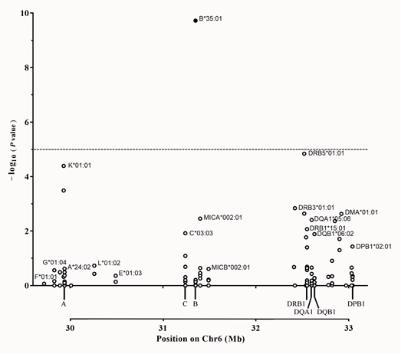Recently, Professor Ouyang Dongsheng from the Institute of Clinical Pharmacology, Xiangya Hospital, CSU, and the team of Xiao Xiaohe from the Fifth Medical Center of the People's Liberation Army/Institute of Traditional Chinese Medicine of the People's Liberation Army have jointly made important breakthroughs in the field of genetic basic research on traditional Chinese medicine-induced liver injury. The research result “HLA-B*35:01 Allele is a Potential Biomarker for Predicting Polygonum Multiflorum-Induced Liver Injury in Humans” has been published in the international famous journalHepatology(IF=14.079).


In recent years, safety issues such as "aristolochic acid-induced kidney damage", "talc ovarian cancer risk", and "Xiao Chai Hu Decoction-induced interstitial pneumonia" have cast a shadow over traditional Chinese medicine. Liver damage is the most compelling safety issue in Chinese herbal medicine adverse reactions. According to the statistics ofwww.hepatox.org(a professional website on drug-induced liver injury in China), among the 25,927 cases of drug-induced liver injury admitted to 308 medical institutions in mainland China in 2012-2014, 26.81% were caused by traditional Chinese medicine and health care products, of which polygonum multiflorum and its preparations ranked first.
Professor Ouyang Dongsheng's team has long been committed to the study of genetic pharmacology and pharmacogenomics. This time, Professor Ouyang Dongsheng cooperated with Xiao Xiaohe (Research Fellow) and Wang Jiabo (Associate Research Fellow) to jointly tackle the key problems under the special fund of China’s traditional Chinese medicine industry, and innovatively applied pharmacogenomics to the study of polygonum multiflorum-induced liver injury. In the past 5 years, with human leukocyte antigen (HLA) gene as the focus, they found and proved that the HLA-B*35:01 allele was a highly specific risk factor for polygonum multiflorum-induced liver injury in (OR, 143.9).
This finding demonstrates that the risk of polygonum multiflorum-induced liver injury is related to the genetic background of the individual. It is not that polygonum multiflorum is not safe, but it is not safe for some individuals. At the same time, this research result is also of great significance for guiding the clinical rational use of polygonum multiflorum. It provides an important theoretical basis for promoting the national comprehensive and effective prevention and control measures for the risk of liver injury induced by polygonum multiflorum and its related preparations, and more importantly, it provides new ideas for the evaluation of the safety of traditional Chinese medicine.
Source: Xiangya Hospital











